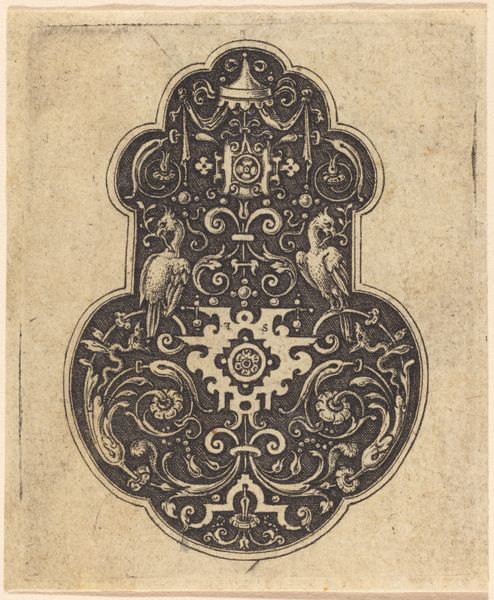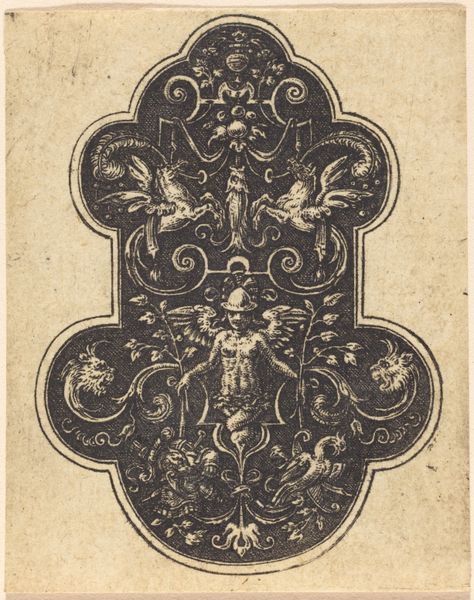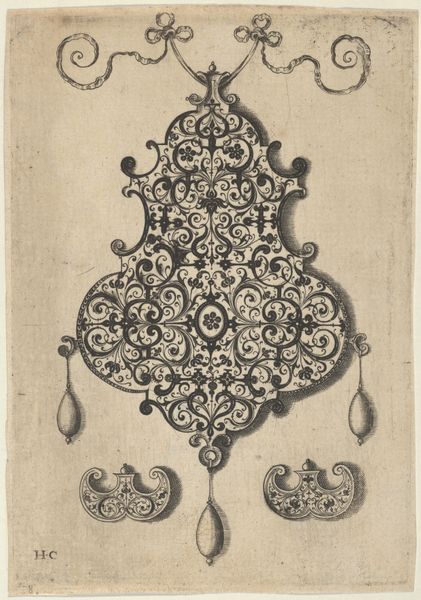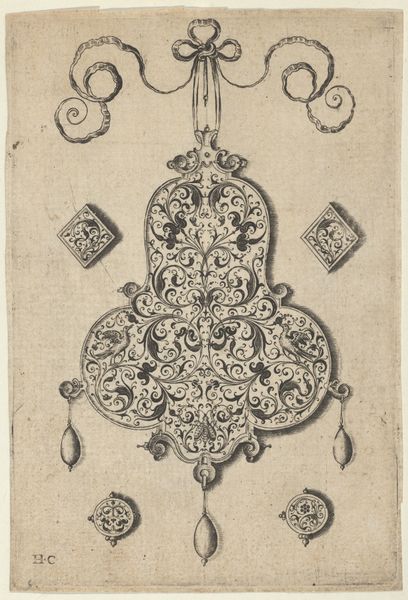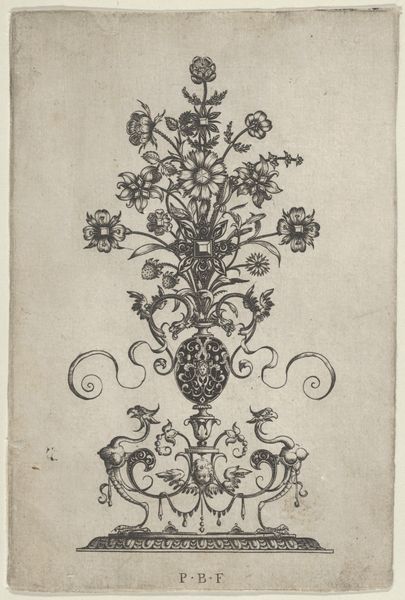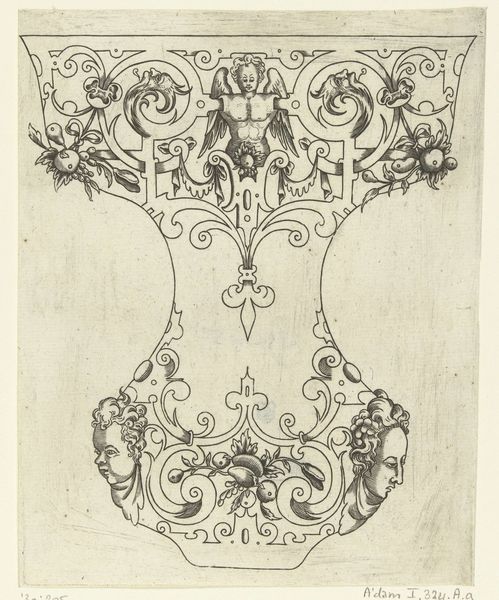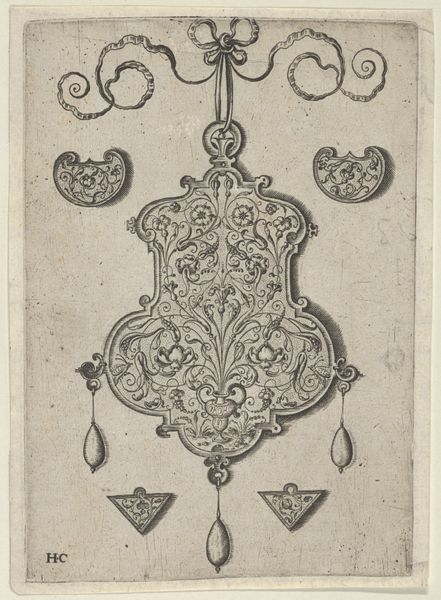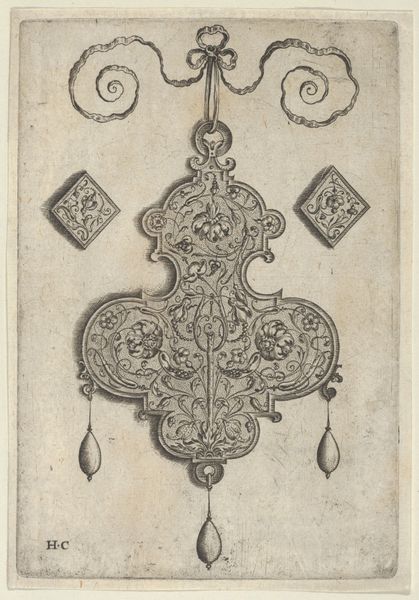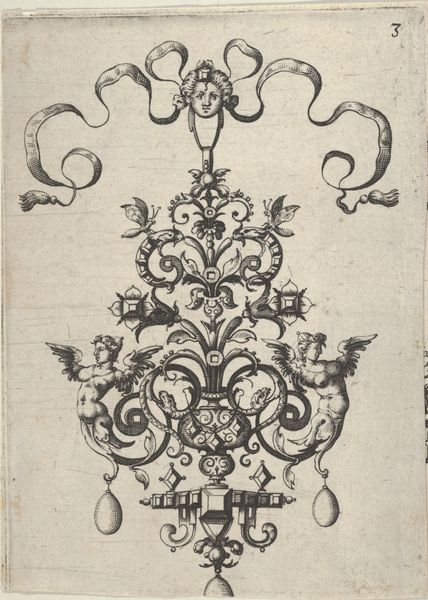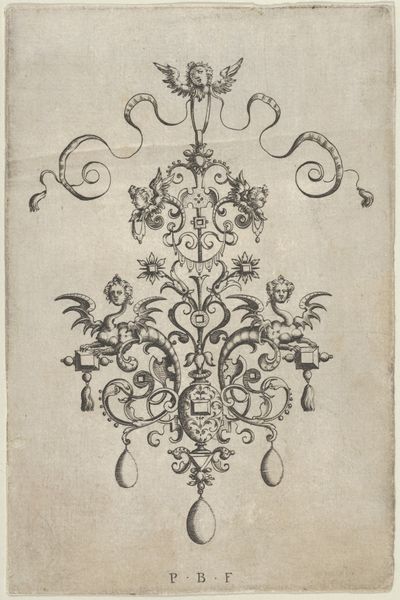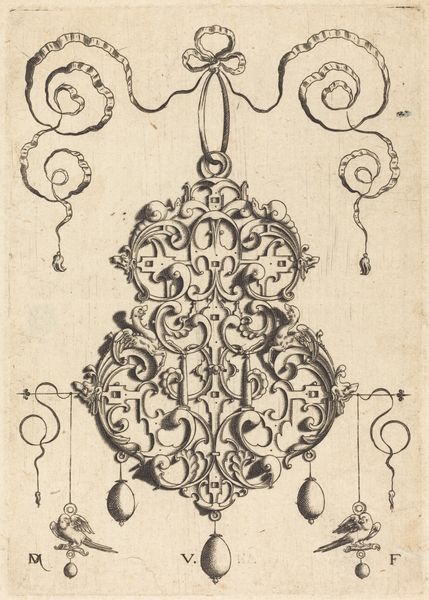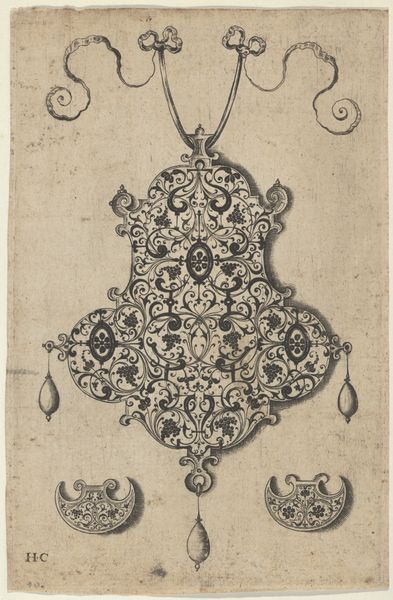
drawing, print, engraving
#
drawing
#
pen drawing
# print
#
11_renaissance
#
engraving
Copyright: National Gallery of Art: CC0 1.0
Curator: Let’s discuss this intriguing Renaissance print, "Cherub" by Étienne Delaune. It appears to be an engraving. The dense and ornate design really catches the eye. What's your initial response to it? Editor: It feels almost claustrophobic! Every millimeter seems covered with intricate detail. The cherub at the top is almost overwhelmed by the sheer density of the floral and grotesque motifs surrounding it. It gives the impression of being decorative above all else, almost like wallpaper or an ornament. Curator: Indeed. Delaune was celebrated for his skills in ornament design during his era. Prints like these weren't just art objects; they were models and source material for other artisans—metalworkers, jewelers, even furniture makers— to showcase styles that aligned with the aristocratic taste of that era. The repetition and symmetry were certainly very appealing to the wealthy. Editor: So this wasn't necessarily meant to hang on a wall and be contemplated for its deep meaning? It was a tool for propagating a specific aesthetic of opulence? That's fascinating in how it defines art as something less precious and elitist, more accessible. I am still troubled, however, by how rigid this beauty is and how all the floral shapes look somehow sharp, a bit dangerous. Curator: Exactly! The purpose-built nature impacts our reading of it. And those sharp edges you mention aren't accidental. Notice how he marries floral motifs with stylized animal forms, maybe referencing heraldry; all rendered in precise lines that would translate well into metalwork or other materials. Editor: It becomes so interesting when you point out that what I first interpreted as discomfort – the overwhelming pattern, those sharp floral shapes – may, in fact, be elements that served to empower artisans to further disseminate certain visual elements related to class and gender at that time. The image almost vibrates with a static charge because of this historical weight. It certainly challenges the usual understanding of Renaissance art! Curator: It truly does! And seeing it not as a singular masterpiece, but as a blueprint— a vital step in broader visual culture—opens up a more complete understanding of its role. Editor: Thanks to this deeper consideration, I can now appreciate its role and its purpose much more and think about Renaissance aesthetics more critically. It feels empowering to challenge assumptions this way.
Comments
No comments
Be the first to comment and join the conversation on the ultimate creative platform.
